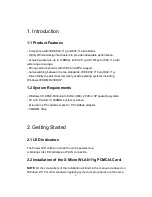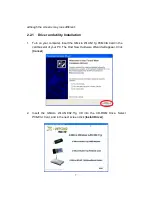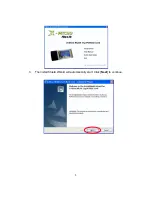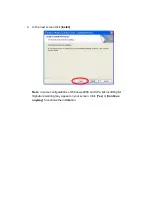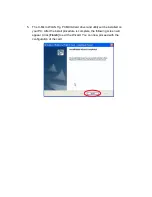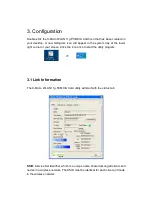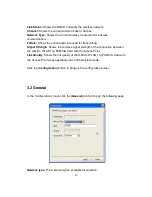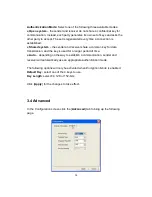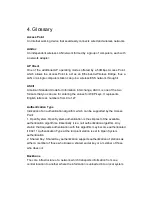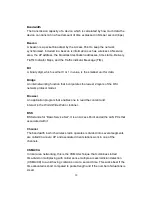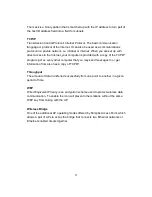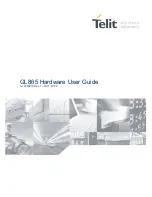
20
ESS stands for “Extended Service Set”. More than one BSS is configured to
become Extended Service Set. LAN mobile users can roam between different
BSSs in an ESS.
ESSID
The unique identifier that identifies the ESS. In infrastructure association, the
stations use the same ESSID as the AP’s to get connected.
Ethernet
A popular local area data communications network, originally developed by Xerox
Corp., that accepts transmission from computers and terminals. Ethernet
operates on a 10/100 Mbps base transmission rate, using a shielded coaxial cable
or over shielded twisted pair telephone wire.
Fragmentation
When transmitting a packet over a network medium, sometimes the packet is
broken into several segments, if the size of packet exceeds that allowed by the
network medium.
Fragmentation Threshold
The Fragmentation Threshold defines the number of bytes used for the
fragmentation boundary for directed messages. The purpose of "Fragmentation
Threshold" is to increase the transfer reliability through cutting a MAC Service
Data Unit (MSDU) into several MAC Protocol Data Units (MPDU) of a smaller size.
The RF transmission can not allow to transmit too big frame sizes due to the
heavy interference caused by the large size of a transmission frame. But if the
frame size is too small, it will create overhead during the transmission.
Gateway
A device that interconnects networks with different, incompatible communication
protocols.
HEX:
Hexadecimal, HEX, consists of numbers from 0 – 9 and letters from A – F.
IEEE
The Institute of Electrical and Electronics Engineers, which is the largest technical
professional society that promotes the development and application of electro

